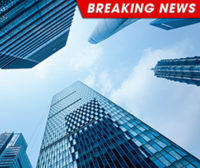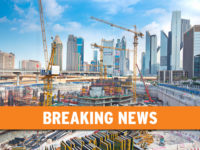In the wake of this summer’s massive earthquakes in California and years of increasingly intense hurricane activity, wildfires, flooding and other natural events, building and design professionals have taken a greater interest in the concept of resiliency. Natural disasters cost the U.S. $91 billion in 2018, according to the National Oceanic and Atmospheric Administration (NOAA), a sign that a growing number of extreme weather events are having a significant economic impact.
What can the construction industry do to mitigate the risks associated with extreme events? A recent report from the National Institute of Building Sciences (NIBS) revealed an 11-to-1 payback for pre-disaster investments that include compliance with the 2018 International Residential Code (IRC) and 2018 International Building Code (IBC) versus the prior generation of codes and requirements.
Among the numerous strategies for designing resilient buildings, material selection is of particular importance. In this article, we will analyze resiliency in the context of the built environment, explore the various attributes of a resilient structure and make the case for why cold-formed steel performs best in each scenario.
“Resiliency” Defined
Put simply, resilience refers to a building’s ability to withstand, respond to and recover rapidly from extreme events in a cost-effective manner. Of course, fortifying a structure against hurricane force winds and minimizing loss from fire present entirely unique sets of design challenges. With so many potential forces at work against a building, it’s important to take a holistic approach to resilient design.
A joint report from the U.S. Department of Homeland Security (DHS) and NIBS lays out five key attributes that comprise resiliency: safety, security, durability, environment and energy conservation. These attributes are presented as basic requirements for addressing natural and man-made hazards, as well as the environmental conditions of the building’s location. The resilience of the building corresponds directly to how well these attributes enable the building to meet these demands.
Let’s take a closer look at these attributes and how cold-formed steel is uniquely suited to addressing the design challenges of each.
Safety
The first and most important attribute of a resilient building is whether it can protect occupants during a life-threatening event such as a hurricane or earthquake. Cold-formed steel has a number of inherent properties that help ensure a building remains intact during and following an extreme event.
Cold-formed steel is a highly ductile material, meaning it can easily bend or stretch without breaking when force is applied, and later return to its original shape without losing its material properties. The fact that CFS framing is more forgiving than more brittle materials gives it a higher degree of resistance to lateral loads, such as those imposed on a structure by seismic or high wind events. It also gives CFS framed wall and ceiling assemblies a higher resistance to uplift and gravity loading.
Another aspect in which cold-formed steel lends resilience to a building is that it has the highest strength to weight ratio of all commonly used framing materials. This is determined by dividing the maximum imposed load by the weight of the material. When cold-formed steel is formed into a C-shape, like a stud, the bends act as stiffeners and increase the strength of the steel dramatically, providing a strength-to-weight ratio that is significantly greater than that of dimensional lumber.
Because cold-formed steel provides great strength at a lighter relative weight, CFS-framed structures are less susceptible to the forces of inertia that wreak havoc on buildings during seismic events. Inertia refers to the reluctance of upper stories to begin moving as the ground shifts and then to stop once the structure has moved. Because it is so light, CFS framed buildings have less weight available to be subjected to these forces.
Cold-formed steel is non-combustible, which of course makes it a superior option for protecting against fire. Because it won’t burn, the material is eligible for use in Type 1 buildings where the fire-resistance standards are most stringent. Both load-bearing and non-loadbearing CFS-framed assemblies have been proven to be fireproof up to four hours when subjected to tests conforming to ASTM E119, Standard Test Methods for Fire Tests of Building Construction, according to the Steel Framing Industry Association. Cold-formed steel has also displayed resilience against fire exposure in tests that follow rigorous NFPA 285 protocols.
Cold-formed steel will consistently deliver these performance benefits, every time and under any condition. Building professionals can be assured that CFS framing members, produced under a third-party certification program, will arrive at the jobsite certified to comply with all standards. Once a steel stud has been formed it will remain straight with no change to the thickness, width or other dimensions, as well as strength and stiffness.
Security
Weather-related events aren’t the only potential threats buildings must be prepared for. Many, such as terrorist attacks, are man-made. The DHS/NIBS report considers blast resistance and ballistics as measures of building resiliency when it comes to security.
Determining a building’s level of protection against an explosive threat can be complicated. The U.S. Department of Defense (DoD) Unified Facilities Criteria (UFC) program developed guidelines to minimize the threat of mass casualties in the event of a terrorist attack on federal buildings, but these guidelines have also been adopted by many private sector projects. Mitigation strategies include maximizing standoff distance, preventing building collapse and minimizing hazardous flying debris. Recent research demonstrates that the overall stiffness and strength of cold-formed steel can be utilized to resist blast threats using conventional construction methods that add little cost to traditional designs.
Cold-formed steel’s performance against progressive collapse was recently demonstrated in the AIT Barracks project in Monterey, Calif. The 110,000-square-foot facility was commissioned by the U.S. Army Corps of Engineers to serve as a modernized, private-sector residence. In addition to seismic considerations, the structure was required to adhere to UFC 4-010-01 requirements for blast loading applied to the exterior framing, as well as UFC 4-023-03 progressive collapse requirements.
Progressive collapse is defined by the American Society of Civil Engineers as the spread of an initial local failure from element to element, eventually resulting in the collapse of an entire structure, or a disproportionately large part of it. To meet the UFC progressive collapse requirement for the exterior walls of the AIT Barracks, the project team ran the CFS joist framing from demising wall to demising wall. The end joists at the exterior wall were then designed to support the wall and roof loading above. This allowed for large sections of exterior wall framing to be removed, while still providing vertical support to the structure above. Additionally, structural steel tubes were designed in line with the joist framing at three end locations where the floor and roof were supported by the stud framing, allowing for progressive collapse requirements to be met if the bearing wall below were removed.
Durability
The third measure of a building material’s resilience is its durability, or how long it can be exposed to outside elements with minimal wear or damage. A key component of a resilient building is one that is designed to have a long life. Particularly in areas where atmospheric moisture, flooding, or any other inadvertent exposure to water is a threat, cold-formed steel is well suited to help buildings stand the test of time.
Cold-formed steel is corrosion-resistant, doesn’t retain moisture and won’t harbor mold growth. When materials are underwater for any length of time, many are not salvageable when flood waters recede. Cold-formed steel utilizes zinc or similar coatings to boost durability and will last hundreds of years before its corrosion resistance deteriorates. For areas prone to frequent flooding, cold-formed steel framing can be the difference between salvaging a structure or needing to completely gut and rebuild.
Of course, any level of moisture within a wall cavity can quickly become a structural and a health problem. Cladding failure or plumbing leaks can also create significant problems within a structure. The EPA states that there is a 24- to 48-hour window to effectively reduce the potential for mold propagation following exposure to water. That time window can be even shorter if the materials used to build the wall absorb and hold water. This isn’t a problem with cold-formed steel, which is inorganic and does not function as a food source for mold. Also, cold-formed steel is dimensionally stable in a moist environment and won’t warp like lumber will when it gets wet, so walls and floors remain plumb and level.
Finally, cold-formed steel is one of the few building materials that is completely impervious to termites and other pests in any climate or building type. According to Orkin, termite damage in the U.S. results in more than $5 billion annually. Not only are these infestations costly, but they can also compromise the integrity of the structure and limit its ability to respond to some of the more immediate events discussed previously in this article.
Environment & Energy Conservation
In addition to offering safety, security and durability, resilient buildings are also judged on their energy efficiency and impact on the environment. Air tightness, thermal transfer and the use of renewable energy all play a part. Environmental impact, which is often defined through Life Cycle Analysis and also encompasses issues such as acoustical performance, is another area where cold-formed steel can really make a difference.
Steel framing contains on average a minimum 25 percent recycled content and is 100 percent recyclable at the end of its life. It is highly unlikely to end up in a landfill as other framing materials might. The Steel Recycling Institute reports that steel is recycled more than paper, plastic, copper, lead and aluminum combined. When structures have to be renovated or rebuilt after a devastating event, using a material that can be reused or recycled is beneficial from a cost, convenience and sustainability standpoint.
The steel industry as a whole has made great strides to reduce the environmental impact of manufacturing CFS products. According to the Steel Framing Industry Association, the U.S. steel industry has reduced energy intensity by 32 percent and CO2 emissions by 37 percent per ton of steel produced since 1990.
Designing For a Resilient Future
Once you break down the concept of resiliency and the multiple attributes required to design a truly resilient building, it’s clear that cold-formed steel is a superior framing material choice. Cold-formed steel is strong, durable and can contribute to a project’s sustainability goals. It won’t burn, corrode or harbor mold growth. It is resistant to pests, offers consistent strength, and boasts ductility and strength-to-weight ratio that make it perfect for resisting seismic and high wind events.
Cold-formed steel has the characteristics to withstand, respond to and recover rapidly from nearly any extreme event. As the industry continues to embrace resiliency, it’s certainly worth considering how you can incorporate this versatile material into your upcoming projects.



